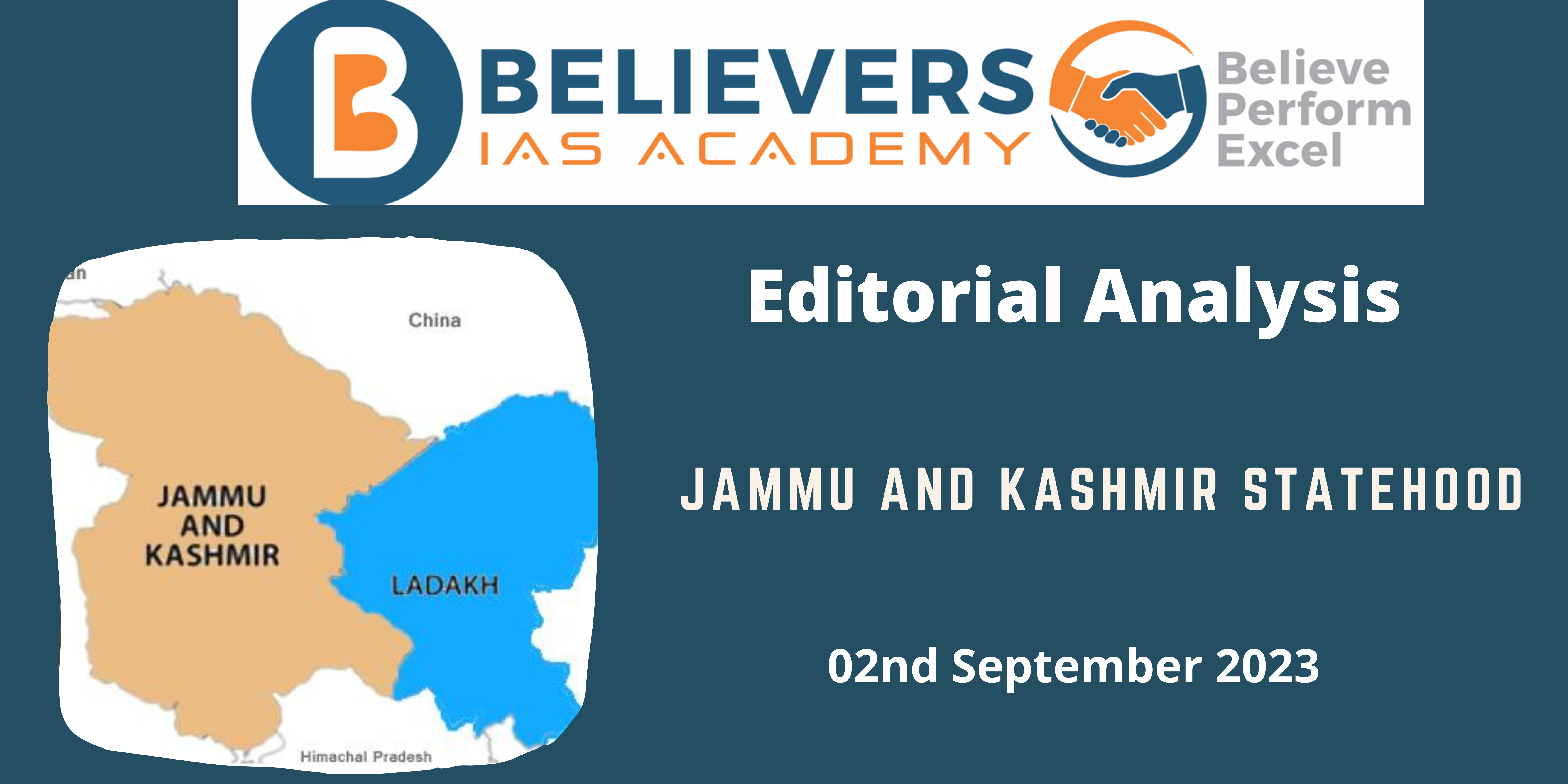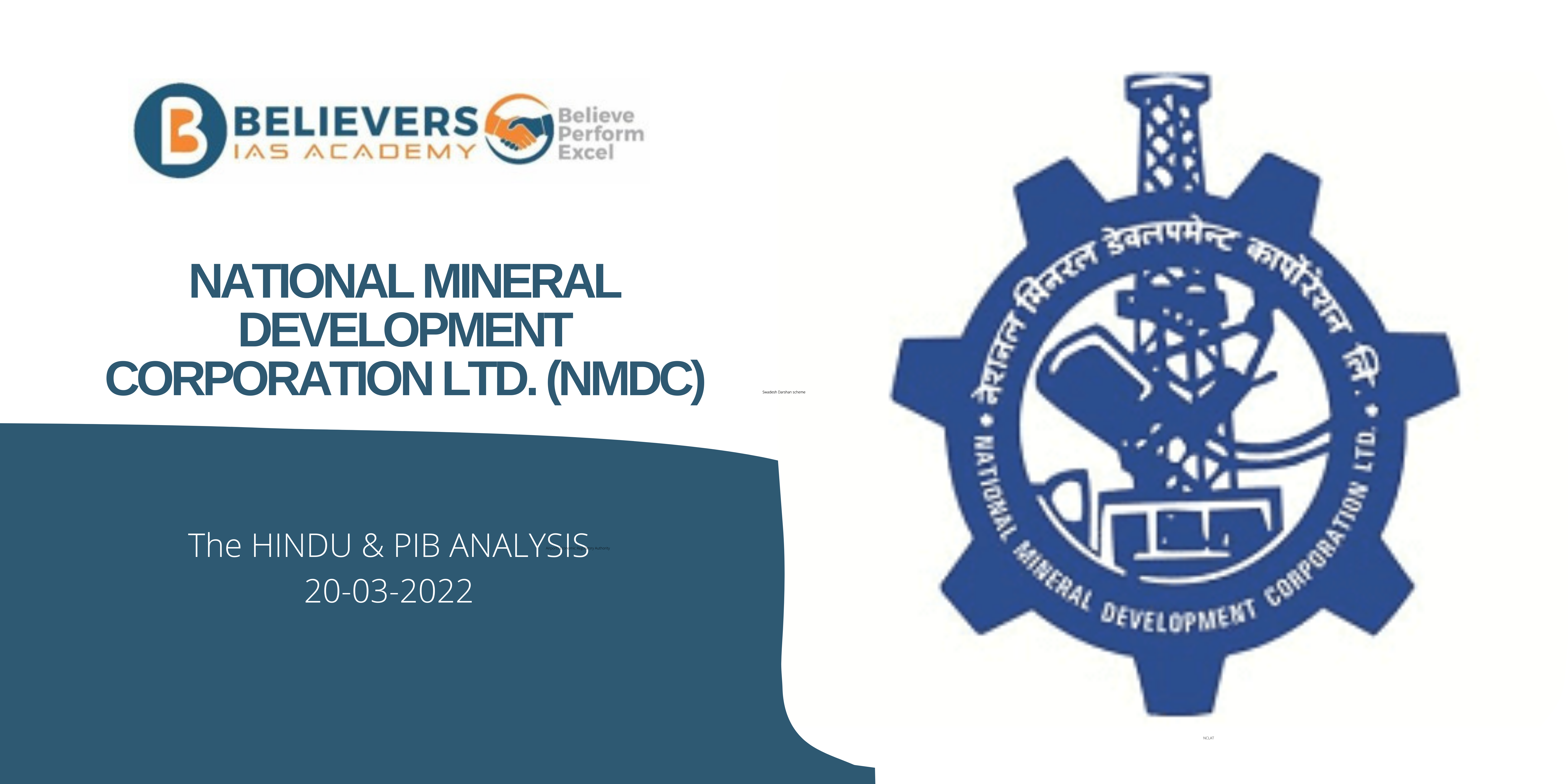Jammu and Kashmir Statehood
Context:
The current scenario surrounding the restoration of Jammu and Kashmir’s (J&K) statehood is marked by a lack of commitment from the Central Government regarding a specific timeline.
Relevance:
GS-02 (Government Policies and Interventions)
Prelims:
- Article 370 and 35(A)
Mains Question:
- Evaluate the implications of the delay in restoring the statehood of Jammu and Kashmir and the challenges related to the constitutional aspects of this transition. (150 words)
Dimensions of the Article:
- Historical Context and Constitutional Transition
- The Current Situation
- The Constitutional and Historical Considerations
Historical Context and Constitutional Transition:
- The transformation of J&K’s status by making Article 370 as inoperative and extending the entire Indian Constitution to the region led to the division of the state into two Union Territories: Jammu and Kashmir, retaining a Legislative Assembly, and Ladakh, without an Assembly.
- The government’s inclination lies in conducting panchayat and municipal elections, in addition to polls for the Assembly.
- Both the Election Commission of India and the State’s Election Commission are at a juncture where a decision must be made, with the process of updating electoral rolls reported to be nearing completion.
The Current Situation:
- The government contends that J&K is currently experiencing a degree of normalcy, characterized by marked reductions in terrorism, infiltration, and incidents of stone-throwing.
- Given this claim, it becomes puzzling to comprehend any further delays in organizing elections. However, it’s crucial to underline that the government’s depiction of normalcy should not, and is unlikely to, influence the adjudication of constitutional issues stemming from the manner in which the special status was revoked.
- Chief Justice of India, Justice D.Y. Chandrachud, astutely noted during the proceedings that the developmental efforts undertaken by the government post-August 2019 hold no relevance to the constitutional challenge.
The Constitutional and Historical Considerations:
- The ongoing proceedings before a Constitution Bench, spanning 14 days, have been marked by rigorous scrutiny of the constitutional and historical factors that will ultimately determine the validity of the changes to the state’s status and territorial organization.
- Any positive changes brought about by the administration on the ground should serve as a compelling argument for the necessity of early elections and the restoration of both popular governance and statehood. These changes should not be misconstrued as a validation of the government’s actions in 2019.
Way Forward:
- It is imperative for the government to act with urgency in facilitating the reinstatement of J&K’s statehood. The absence of statehood limits the region’s capacity to have a say in its own governance, hindering its ability to address its unique concerns and aspirations.
- While constitutional matters are being meticulously examined, it remains essential to prioritize the return of popular rule through elections. The government’s assertion of normalcy must translate into concrete steps for the region’s socio-political advancement.
Conclusion:
The evolving ground situation necessitates swift action in the form of elections and the eventual reinstatement of statehood. Striking a balance between constitutional complexities and the democratic rights and aspirations of the people is imperative, ensuring that the journey towards restoring J&K’s statehood is both equitable and timely.




